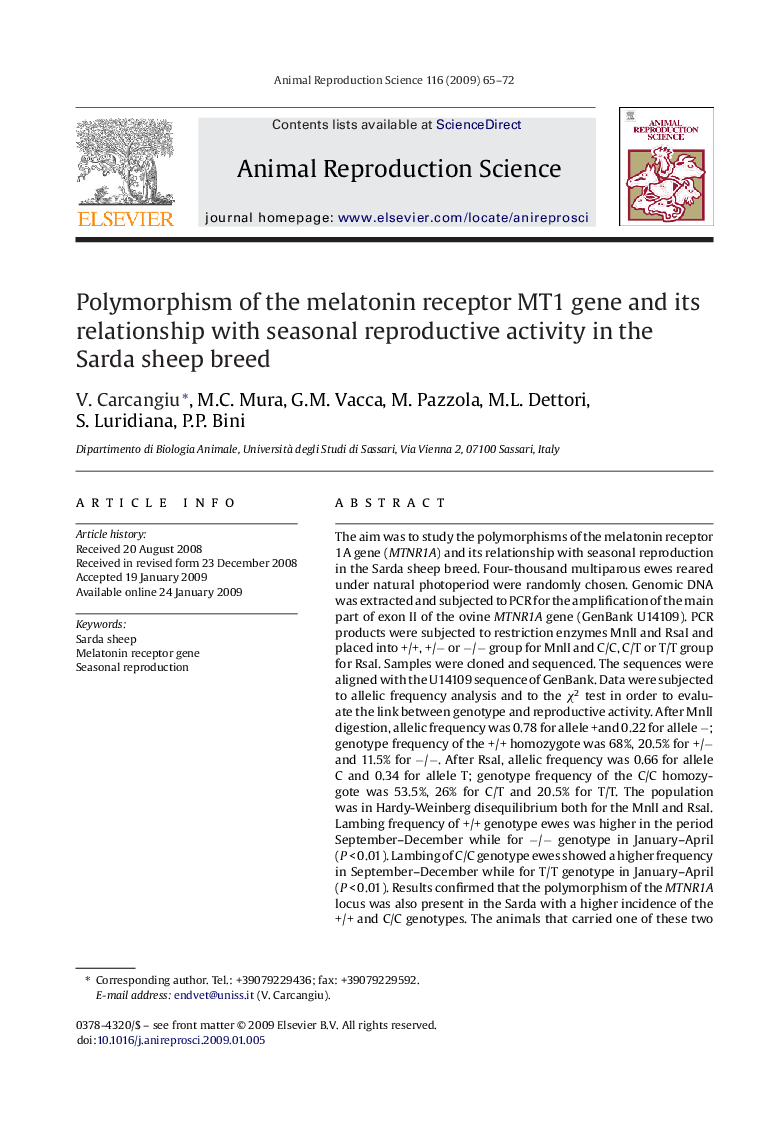| Article ID | Journal | Published Year | Pages | File Type |
|---|---|---|---|---|
| 2074163 | Animal Reproduction Science | 2009 | 8 Pages |
The aim was to study the polymorphisms of the melatonin receptor 1A gene (MTNR1A) and its relationship with seasonal reproduction in the Sarda sheep breed. Four-thousand multiparous ewes reared under natural photoperiod were randomly chosen. Genomic DNA was extracted and subjected to PCR for the amplification of the main part of exon II of the ovine MTNR1A gene (GenBank U14109). PCR products were subjected to restriction enzymes MnlI and RsaI and placed into +/+, +/− or −/− group for MnlI and C/C, C/T or T/T group for RsaI. Samples were cloned and sequenced. The sequences were aligned with the U14109 sequence of GenBank. Data were subjected to allelic frequency analysis and to the χ2 test in order to evaluate the link between genotype and reproductive activity. After MnlI digestion, allelic frequency was 0.78 for allele +and 0.22 for allele −; genotype frequency of the +/+ homozygote was 68%, 20.5% for +/− and 11.5% for −/−. After RsaI, allelic frequency was 0.66 for allele C and 0.34 for allele T; genotype frequency of the C/C homozygote was 53.5%, 26% for C/T and 20.5% for T/T. The population was in Hardy-Weinberg disequilibrium both for the MnlI and RsaI. Lambing frequency of +/+ genotype ewes was higher in the period September–December while for −/− genotype in January–April (P < 0.01). Lambing of C/C genotype ewes showed a higher frequency in September–December while for T/T genotype in January–April (P < 0.01). Results confirmed that the polymorphism of the MTNR1A locus was also present in the Sarda with a higher incidence of the +/+ and C/C genotypes. The animals that carried one of these two gene isoforms showed a not seasonal reproductive activity with the lambing period in September–December.
